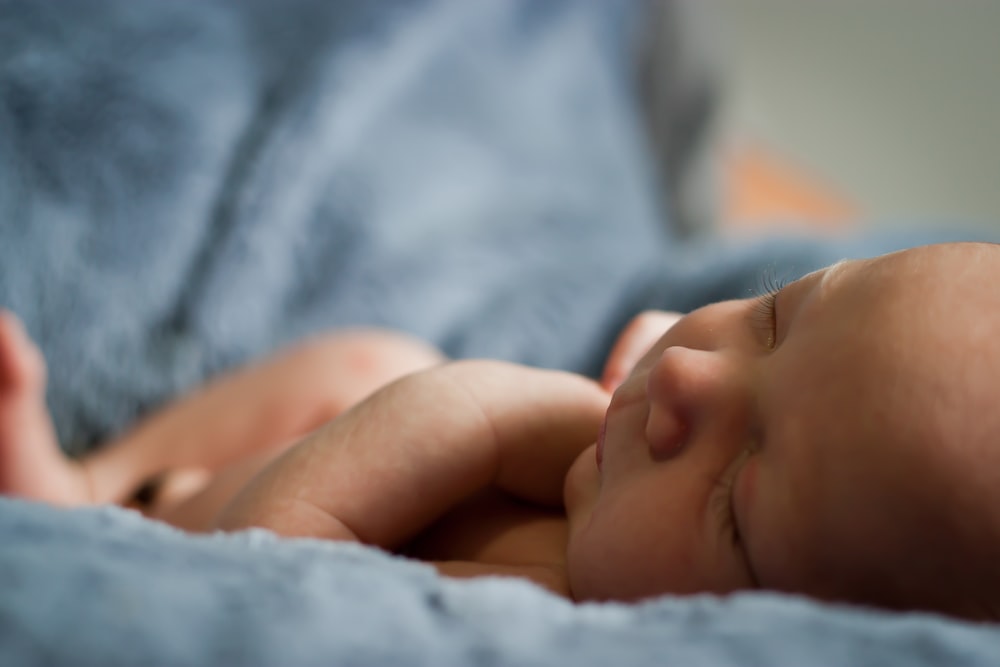According to Centers for Disease Control:
There are about 3,500 sleep-related deaths among US babies each year.
22% of mothers reported not placing their baby on his or her back to sleep, as recommend.
39% of mothers reported using soft bedding (not recommended) when placing babies to sleep.

Many studies have shown that placing a baby younger than 1 year old to sleep on his or her back is the most important thing parents can do to reduce the risk of sudden infant death syndrome (SIDS). Sudden infant death syndrome (SIDS) is the unexplained death, usually during sleep, of a seemingly healthy baby less than a year old. SIDS is sometimes known as crib death because the infants often die in their cribs.

Although the cause is unknown, it appears that SIDS might be associated with defects in the portion of an infant’s brain that controls breathing and arousal from sleep.
Researchers have discovered some factors that might put babies at extra risk. They’ve also identified measures you can take to help protect your child from SIDS. Perhaps the most important is placing your baby on his or her back to sleep. (Mayoclinic.org)
There are two common type of sleeping practices with infants. Bed- sharing and co-sleeping.
Bed sharing is the practice of sleeping with your baby on the same bed. It is usually practiced by breastfeeding moms because it is more convenient for them like the parent does not have to get up and soothe the baby when he/she stirs or when the baby needs to feed. It is also commonly practiced in Asian countries. The American Academy of Pediatrics discourages bed- sharing especially during the first 6 months because it is an unsafe practice, no matter how it is done especially if you smoke or use alcohol, illegal drugs or medications that may make you sleep very soundly. This is due to the dangers of suffocation and strangulation.
Co- sleeping on the other hand, is the practice of sleeping in close proximity to your child but on a separate bed, like the baby sleeping on a crib inside your room. Advantages of this practice is you can keep the child nearby but not too close enough to increase dangers of suffocation.
Safety Guidelines:
- Place the baby to sleep on her back to reduce SIDS. Some babies will roll onto their stomachs. You should always place your baby to sleep on the back.
- Put your baby to bed in his own crib or bassinet. Don’t bed-share. This is when babies and parents sleep together in the same bed. Bed-sharing is the most common cause of death in babies younger than 3 months old. Keep your baby’s crib close to your bed so your baby’s nearby during the night.
- Make sure your baby’s bassinet, crib or play yard meets current safety standards. Visit the U.S. Consumer Product Safety Commission (CPSC) to learn more about product safety standards or product recalls.
- Keep the crib as bare as possible. Keep soft items and loose bedding out of the crib such as blankets, stuffed toys, and pillows could suffocate your baby. Dress your baby in sleepers instead of using blankets.
- Make sure that your baby’s crib has a firm mattress (with a fitted sheet). Don’t use sleep positioners, pillows or other products that attach to crib slats or sides. They could block your baby’s mouth or trap your baby.
- Don’t let your baby sleep in a carrier, sling, car seat or stroller. Babies who sleep in these items can suffocate. If your baby falls asleep in one, take her out and put her in her crib as soon as you can.
- Offer a pacifier. Sucking on a pacifier without a strap or string at naptime and bedtime might reduce the risk of SIDS. If you’re breast-feeding, wait to offer a pacifier until your baby is 3 to 4 weeks old and you’ve settled into a nursing routine.
- If your baby falls asleep in a car seat, stroller, swing, infant carrier, or sling, you should move him or her to a firm sleep surface on his or her back as soon as possible.
- Breast-feed your baby, if possible. According to research, Breast-feeding for at least six months lowers the risk of SIDS.
- Older siblings or other children should not sleep with babies under a year old.
- Remove hanging window cords or electrical wires near where your baby sleeps. Babies can get tangled in them and choke.

Other ways to help reduce sleep dangers including SIDS (marchofdimes.org)
- Make sure your baby gets all her vaccinations. These shots help protect her from serious childhood diseases and may help prevent SIDS. All children should be vaccinated for their own health and so they don’t spread infections to others.
- Don’t smoke and keep your baby away from other smokers and secondhand smoke (smoke from other people’s cigarettes, cigars and pipes). Babies who live with smokers are at increased risk of SIDS. Keep your home and your car smoke-free.
- Don’t smoke, drink alcohol or use harmful drugs during pregnancy. Babies of mothers who do these things are at increased risk of SIDS.
- Go to all your prenatal care checkups during pregnancy. Babies of mothers who don’t get regular prenatal care are at increased risk of SIDS.


